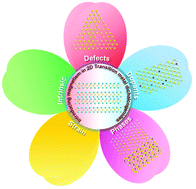Ferromagnetism of two-dimensional transition metal chalcogenides: both theoretical and experimental investigations
Abstract
In recent years, with the fast development of integrated circuit electronic devices and technologies, it has become urgent to improve the density of data storage and lower the energy losses of devices. Under these circumstances, two-dimensional (2D) materials, which have a smaller size and lower energy loss compared with bulk materials, are becoming ideal candidates for future spintronic devices. Among them, 2D transition metal chalcogenides (TMCs), which have excellent electronic and optical properties, have attracted great attention from researchers. However, most of them are intrinsically non-magnetic, which severely hinders their further applications in spintronics. Therefore, introducing intrinsic room-temperature ferromagnetism into 2D TMC materials has become an important issue in spintronics. In this work, we review the introduction of intrinsic ferromagnetism into typical 2D TMCs using various strategies, such as defect engineering, doping with transition metal elements, and phase transfer. Additionally, we found that their ferromagnetism could be adjusted via changing the experimental conditions, such as the nucleation temperature, ion irradiation dose, doping amount, and phase ratio. Finally, we provide some insight into prospective solutions for introducing ferromagnetism into 2D TMCs, hoping to shed some light on future spintronics development.

- This article is part of the themed collections: Recent Review Articles and 2021 Nanoscale HOT Article Collection


 Please wait while we load your content...
Please wait while we load your content...